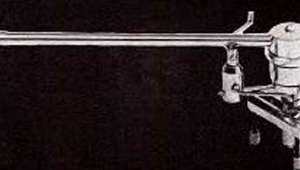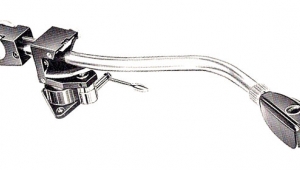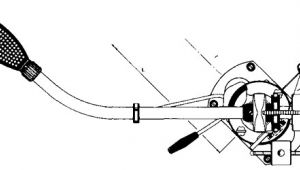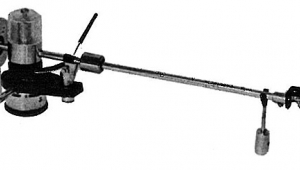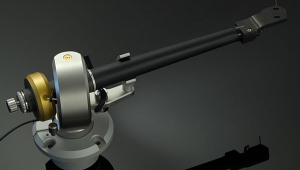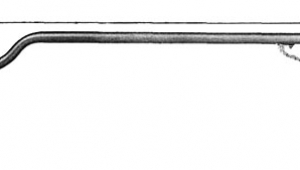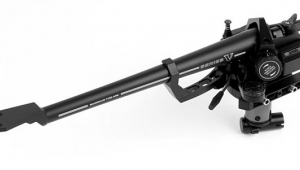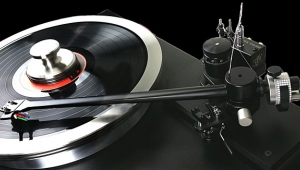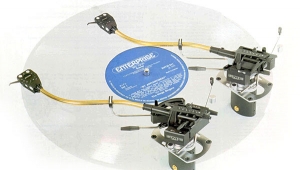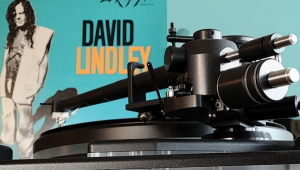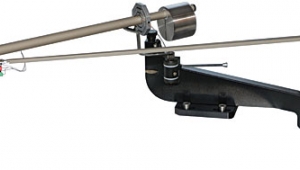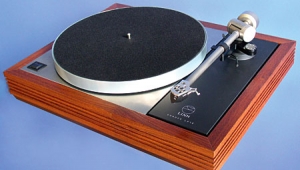| Columns Retired Columns & Blogs |
The Well-Tempered Arm Robert Harley, January 1992
Robert Harley wrote about the Well-Tempered Arm in January 1992 (Vol.15 No.1):
Footnote 1: Back in Vol.11 No.3 (March 1988), JGH wrote a whimsical "As We See It" in which he made humorous predictions about the future. Despite his wry sense of irony, one of his predictions was right on the money: "The phono cartridge to end all phono cartridges will not be invented in 1988. That will not happen until 1991, after the last of the vinyl disc-stamping machines is installed in the Smithsonian Institution."—Robert Harley
The Well-Tempered Turntable (WTT) and Well-Tempered Arm (WTA) combination is one of those products destined for the audio hall of fame. This unusual design incorporated some innovative thinking and quickly established itself in the mid 1980s as a musical bargain in a world of similarly priced competitors...The Stereophile-owned WTT served as a reference in J. Gordon Holt's system and, just as tools are passed down from master to apprentice, I inherited the WTT and WTA when JGH moved up to the Versa Dynamics 2.0. The WTT has provided me with many hours of enjoyable music listening. Further, despite all the advances in digital, the WTT and AudioQuest 7000 cartridge continue to trounce even the best digital converters and transports.
A sure sign of a classic product is the number of modifications and tweaks available for it. Many of these third-party upgrades are the result of the tinkerer's love for the product and his drive to squeeze the last drop of performance from it. Such is the case with the Well-Tempered Arm modification described in this "Follow-Up." Audiophile and LP aficionado Lary Pedersen of The LP Lab (does LP refer to Long Playing records, or Lary's initials?) has concocted a mixture of tweaks—both electrical and mechanical—for the WTA.
First, Lary replaces the sand inside the arm with a mixture of the stock sand and a damping material. The damping material reportedly sucks the energy out of the surrounding sand which is in direct contact with the arm tube. The internal wiring—from headshell to RCA jacks—is replaced with Teflon van den Hul MCS 150 (the MCS stands for Mono-Crystal Silver, the 150 identifies the wire's 150;um diameter). This is the same internal wire used in the SME V and Graham 1.5 arms. A four-wire set of MCS 150 retails for $80. The new wiring is run outside the arm tube and held in place by clear heat-shrink tubing. Tiffany OFC RCA jacks ($40/pair retail) replace the less-than-optimum stock RCAs, and the RCA terminal block is encased in a damping compound.
Next, Lary replaces the vertical post between the offset collar and paddle with a larger version made from an aircraft alloy. A ring of black damping material is attached to the post just above the paddle. In addition, the offset collar is strengthened and glued to the arm tube. A layer of damping material is added to the finger lift and the bottom plate. These mechanical modifications are designed to make the arm more rigid and thus less prone to resonance, as well as damping the resonances that do occur. The stock armrest, which has a tendency to resonate, is removed.
Finally, the arm wire is burned in for three days with a much higher voltage than a cartridge can deliver. A few of Lary's helpful hints on arm setup are also included in the deal. The workmanship is superb, with careful attention to detail. The modification is clearly a labor of love.
The price? $195, including return shipping by UPS ground. An optional VTA adjustment is available for an additional $50. Turnaround time is typically three days.
The modified arm saw duty for a few months and was then returned for the latest mods. I went back to the stock arm in the interim, allowing extended listening to both versions. The modified arm went back on the turntable about two weeks before writing this. Replacing the arm twice also reduced the variability of arm setup on the overall performance. I adjusted the arm each time to what I thought was the best performance.
The playback system during the most recent evaluation included a Vendetta Research phono preamp, Audio Research LS2 line-stage preamp, Apogee Centaur Minor loudspeakers, Snell Type B loudspeakers, and the excellent AudioQuest 7000 cartridge (footnote 1). Power amplifiers were the reference VTL 225W Deluxe monoblocks. The replacement of an Audio Research SP-11 Mk.II with the Vendetta and LS2 took LP replay to new heights.
After spending many hours with the stock WTA and Lary's modified version, I can say that the $195 asking price may well be the best investment WTT owners can make in their systems. While the stock WTA is excellent, the modification takes its musical performance to another level.
Easily the most apparent difference was the change in the stock arm's lightweight tonal balance. The stock arm can sound almost thin and lacking in authority compared to other arms, with a slightly prominent upper midrange and lower treble—a characteristic that exacerbates the lightweight bass. The modification had a major effect on the arm's basic tonal character, returning a sense of warmth, weight, and power to the bass. There was a much greater feeling of authority in the lower registers, bringing a newfound sense of rhythmic drive to my favorite records. The bass was fuller, rounder, and had more dynamic impact. Kick drum took on an immediacy not heard from the stock arm, which, coupled with the rounder bass, greatly added to my enjoyment of LPs.
The stock arm's tendency to sound slightly forward in the upper mids and treble was mitigated, replaced by a welcome smoothness. In fact, the modification had a big effect on the apparent tonal balance: a warmer bass, more laid-back mids, and softer treble. These characteristics gave music a more relaxed character with the modified arm. On the Philadelphia Jerry Ricks album (Radiotron SLPM 37062), for example, the acoustic guitar's string attack was less exaggerated, Jerry's voice lost its slight edginess, and the guitar's lower registers were better balanced. In addition, the treble became softer, sweeter, and much more engaging, though not at the expense of revealing musical detail.
Similarly, upper-register piano notes on closely miked recordings that had a tendency to become brittle and strident on the stock arm became much less so after the modification. There was a smoothness and liquidity to the upper mids that contrasted with the stock arm's tendency to some hardness in this region. In addition, the more polite and refined mids made the presentation less forward and immediate. It was as though the music took a step back, inviting the listener to come forward rather than thrusting itself upon him. Consequently, music had a greater sense of ease and involvement.
The modified arm also seemed better at revealing detail in complex passages. The intricate percussion work on the album Cascades (Milestone M-9109) by the Brazilian trio Azimuth was more focused, precise, and detailed. By comparison, the stock arm had a slight sense of blur and slowness to transients that made the many layers of percussion less distinct from each other. The modification added a greater feeling of speed and precision to transient information.
There was also an increase in depth, sense of space, and drama. The music seemed to emerge from a "blacker" background, with a heightened impression of three-dimensionality. Although the entire presentation took a step backward spatially with the modified arm, the relative spatial distances between instruments increased. Soundstage transparency improved, allowing a clearer view of the recorded acoustic's depths.
These last two improvements—resolution of detail and better soundstaging—were much more subtle than the large difference in tonal balance rendered by the modification. The most immediate difference was the weightier reproduction of low frequencies, coupled with a smoother, more laid-back upper mid and treble presentation. The overall effect was a more musical rendering.
The LP Lab's modification of the WTA arm is a bargain at $195. The improvement in performance was far greater than replacing interconnects or loudspeaker cable, for example. The modification significantly improved what was already an excellent product and should be considered essential for WTA owners. In fact, it may just be the best $195 you could spend on your system.
The WTA modification is available from Lary Pedersen at The LP Lab, 208 Pepperwood Street, Hercules, CA 94547. Tel: (501) 799-3858, 11am–2pm PST.—Robert Harley
Footnote 1: Back in Vol.11 No.3 (March 1988), JGH wrote a whimsical "As We See It" in which he made humorous predictions about the future. Despite his wry sense of irony, one of his predictions was right on the money: "The phono cartridge to end all phono cartridges will not be invented in 1988. That will not happen until 1991, after the last of the vinyl disc-stamping machines is installed in the Smithsonian Institution."—Robert Harley
- Log in or register to post comments
